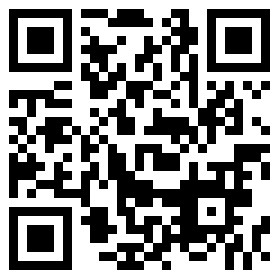In the era of intelligence, wearable technology leads a healthy lifestyle
The booming development of wearable technology has pushed our sports experience to unprecedented heights. In the past week, we delved into the "2024 Global Fitness Trends Survey" and found that wearable technology continues to lead this year, including smartwatches, exercise trackers, heart rate monitors, and GPS tracking devices. These devices not only provide us with smarter and more scientific ways of movement, but also play a role as home control centers in our daily lives.
What is wearable technology
Wearable technology refers to electronic devices that can be worn on the body and interact with users. The following are common sports wearable devices and their functions:
Smart watches: Smart watches are usually equipped with heart rate monitoring, GPS positioning, pedometers, and other functions. Some advanced smartwatches can also provide more exercise data, such as running speed, sleep quality, altitude, etc.
Smart wristbands: These devices are usually lighter and suitable for daily wear. They are mainly used to track basic exercise data such as step count, calorie expenditure, and sleep status.
Smart glasses: Some smart glasses are designed for exercise and can provide real-time information such as steps, heart rate, navigation, etc.
VR fitness equipment: Virtual reality (VR) technology is gradually integrating into the sports field, providing users with a more immersive exercise experience. Some VR fitness devices combine virtual environments and real-time data to make workouts more fun and effective.
Smart shoes: Some sports shoes are embedded with sensors that can track data such as step count, stride length, and landing method. These pieces of information can be analyzed through mobile applications or other devices.
Smart earphones: Some sports specific smart earphones have built-in heart rate monitoring and other sensors that can provide real-time feedback. This helps sports enthusiasts such as runners and cyclists monitor their health and athletic performance.
These devices are typically capable of collecting users' health data, activity data, location data, etc., and transmitting this data to the cloud for analysis and processing to provide more accurate health management and personalized services. The application areas of wearable technology are very wide. Monitor users' health data, such as heart rate, blood pressure, sleep quality, etc., to help users better manage their health status. Monitoring users' exercise data, such as step count, calorie consumption, etc., helps users better understand their exercise situation and develop more scientific exercise plans. Wearable devices can serve as the control center for smart homes, controlling household appliances through voice or gestures.
What data does the watch monitor to develop personalized exercise plans?
A smartwatch is a wearable device that combines multiple functions, such as displaying time, weather, message reminders, and performing payment, navigation, and other operations. Generating personalized fitness plans and recommendations is typically based on the user's heart rate data, exercise history, and some additional personal information.
Heart rate: Smart watches typically measure the user's resting heart rate, which is the heart rate in an inactive state. Resting heart rate can reflect basal metabolic levels and cardiovascular health, which is helpful for developing personalized fitness plans. Through specific exercise tests or algorithms, smartwatches may estimate the user's maximum heart rate; The maximum heart rate is one of the key parameters for developing personalized heart rate zones. Some smartwatches may also measure heart rate variability, which is a change in the interval between heartbeats. Heart rate variability is related to the body's ability to regulate stress and is useful for evaluating the body's recovery and adaptability.
Sleep data: Some smartwatches take sleep data into consideration because adequate sleep is crucial for recovery and health. Sleep data can affect the development of fitness plans to ensure sufficient rest and recovery time. Including sleep duration, long-term low sleep duration may be associated with fatigue, cognitive decline, and mental health issues; Deep and light sleep, understanding the sleep cycle, can help evaluate sleep quality. Deep sleep is crucial for body repair and recovery.
Sports history and personal goals: The smartwatch records the user's sports history, including type, intensity, duration, etc. By analyzing these data, watches can understand users' exercise habits and preferences. Personal information such as fitness goals and weight loss goals set by users may also be considered in the process of generating plans.
Health status and user feedback: Some watches may require users to provide some basic health information, such as age, gender, height, weight, etc., in order to have a more comprehensive understanding of the user's overall health status. Some smartwatches may also collect user feedback information, such as exercise experience, fatigue, etc., to further adjust suggestions and plans. For female users, some smartwatches may also integrate menstrual cycle information to consider adaptability to exercise at different stages of the menstrual cycle.
What are the health indicators that can be monitored through a watch and what can they indicate?
Smart watches provide multiple functions in health monitoring, with built-in sensors and algorithms that can monitor users' physiological indicators and provide real-time health feedback. Here are some common health check functions:
1. Heart rate monitoring
The smartwatch is equipped with an optical heart rate sensor that can monitor the user's heart rate in real-time. By continuously tracking heart rate, users can understand their cardiovascular health status and receive alerts when needed, such as maintaining appropriate exercise intensity during exercise. The specific interpretation is as follows:
In a quiet state, a lower real-time heart rate usually indicates that the body is in a resting state, while a higher heart rate may be due to exercise, emotional excitement, or physiological stress. The exercise state can observe the changes in heart rate during different activities, in order to understand the intensity of exercise, emotional response, etc.
Slow heartbeat when quiet may be due to a healthy heart. Changes in heart rate can tell us the body's adaptation to exercise. If it continues to decline, it may indicate good exercise results. Low heart rate variability may be due to the body feeling stressed, fatigued, or in a state of stress, while high heart rate variability typically means the body is better able to adapt to various situations and has stronger recovery capabilities.
2. Stress and emotional data
Some watches have blood pressure monitoring function, which can directly measure or estimate the user's blood pressure level through other data. Although these estimates are usually not as accurate as professional equipment, they can still provide useful trend information. Some smartwatches can also monitor blood oxygen saturation, providing information about the respiratory system and oxygen supply. This is of great significance for high-altitude activities, sleep monitoring, and the management of some chronic diseases.
Smart watches can provide detailed reports on sleep quality by analyzing users' exercise and heart rate data, including bedtime, number of awakenings, deep sleep and light sleep periods. This helps users better understand and improve their sleep habits.
Heart rate variability (HRV) is also closely related to stress and will be included in the monitoring scope. Low HRV may be associated with physiological or psychological stress, while high HRV may indicate better adaptability and mental health. Based on the evaluation of heart rate and other indicators, understand the user's stress level and take timely measures to relax or relieve stress. Providing information about users' emotional states helps to understand emotional health.
In this new era, smartwatches are no longer just simple time displays. They are a thoughtful health manager, sports coach, and intelligent assistant for daily life. Through cutting-edge wearable technology, we are ushering in a smarter and healthier sports lifestyle.


